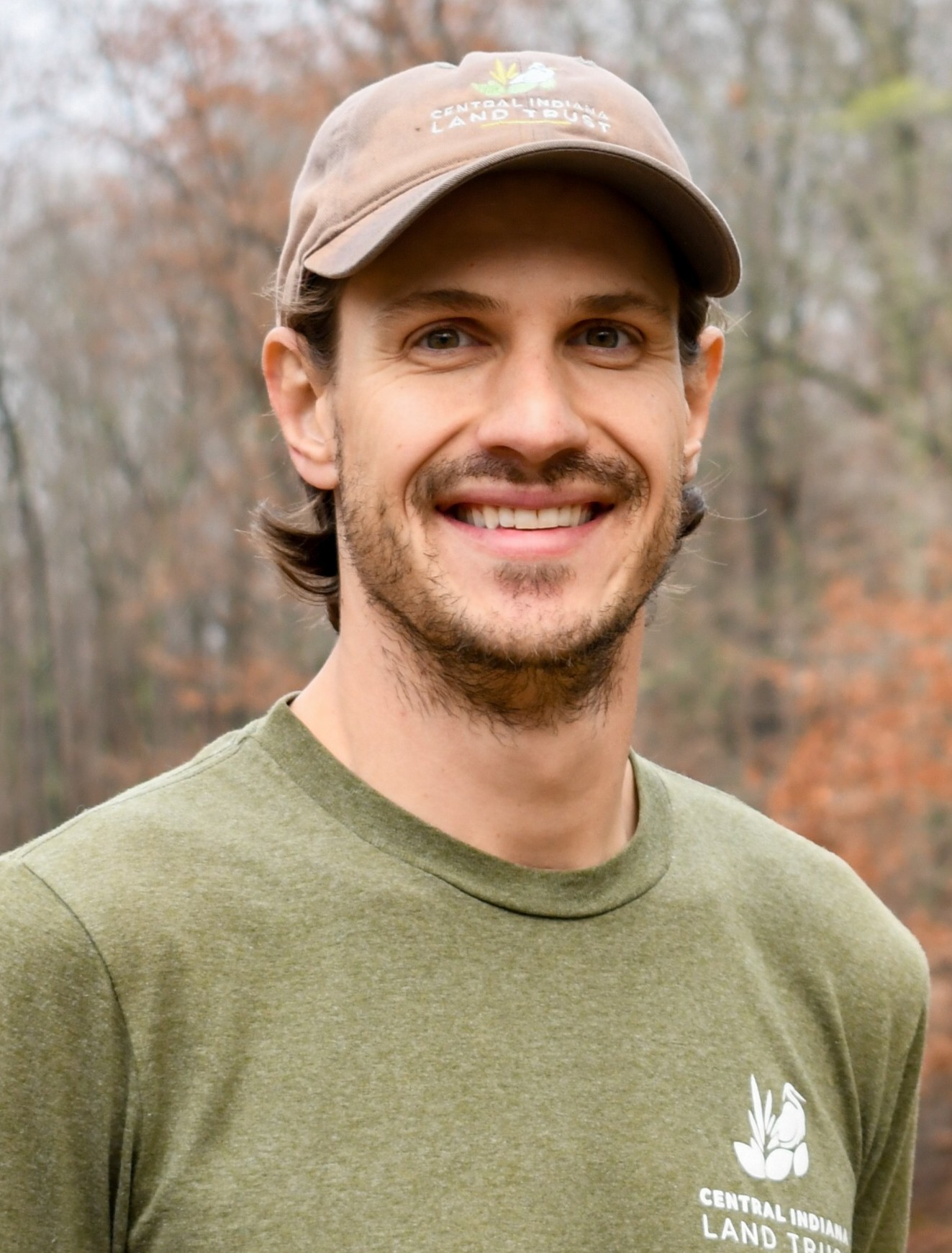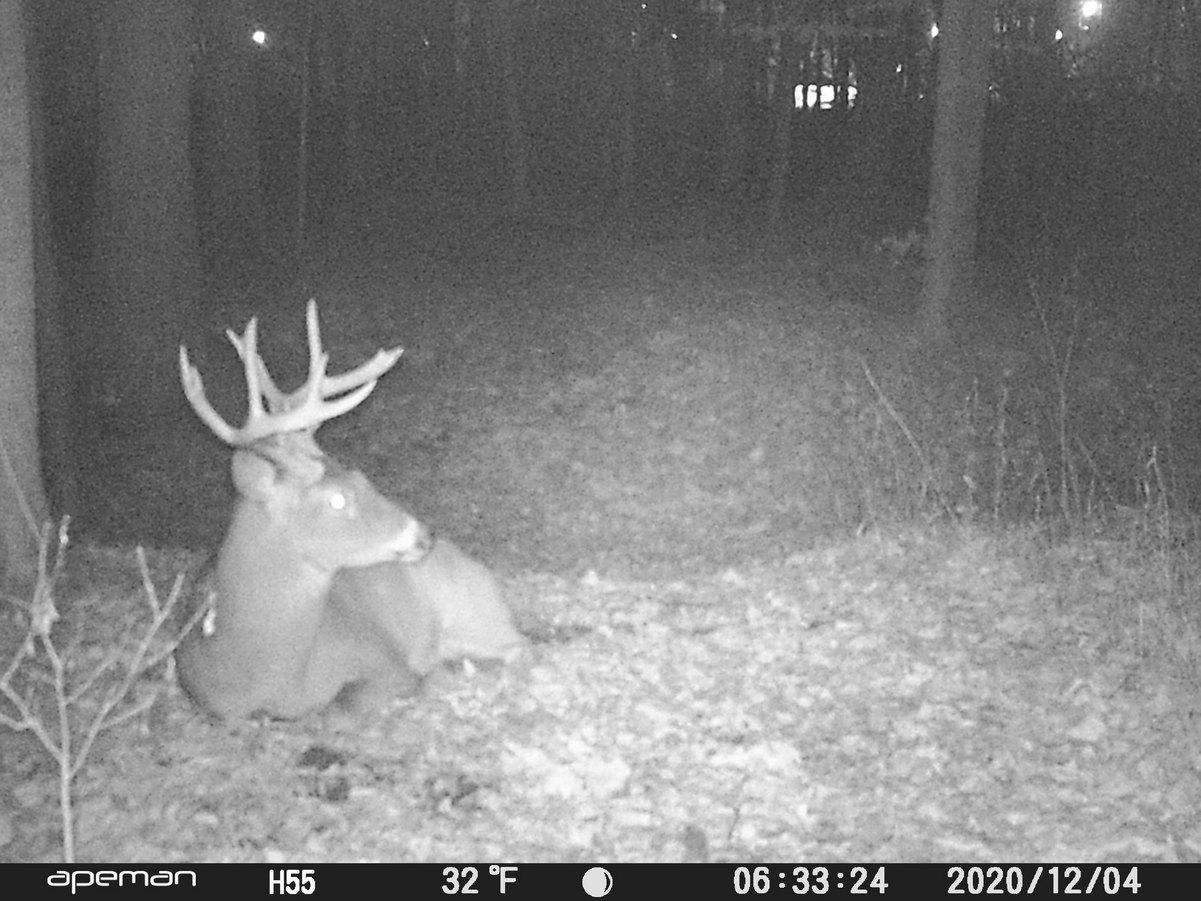
Buck
A buck at Oliver's Woods
Trail Cam Captures Oliver’s Woods Night Life
Written By: Grace van Kan
Date Published: January 22, 2021
Grace van Kan
By White River Steward Grace van Kan
A few weeks ago, I sat down at my computer and popped in the memory card that I’d retrieved from our trail cam at Oliver’s Woods earlier in the day. Loading up the files and clicking my way towards the images captured over the previous two weeks, there was no way to keep my excitement down. What kind of animal secrets would soon be revealed? What undercover inhabitants might I unveil?
Deer, certainly. Raccoons? Weasels? (I figured that Bigfoot or a lesser cousin would favor a more heavily wooded area—important to keep my expectations in check.)
I took a breath and opened the first image. Centered in the frame was the length of a trail, a seemingly perfect stage for creatures of a bolder nature. The first few images were devoid of animal life but provided me a time lapse of the trees’ shadows stretching across the trail. Eventually, some squirrels. A deer. A buck! A buck laying down right in the middle of the path!
Thousands of pictures of grasses subtly shifting in the wind, shadows across the path, and squirrels being squirrels.
Squirrels are fun, but it was time to re-evaluate our intentions and adjust accordingly. What were we hoping to accomplish with the trail cam?
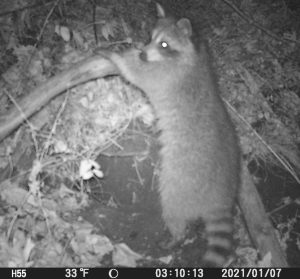
Raccoon at Oliver’s Woods
We set up the trail cam as an exploratory tool to help us get a glimpse of the activities of our animal neighbors at Oliver’s Woods, many of whom are most active at night. In determining a prime location for the trail cam, we needed to look for evidence of animal activity: tracks, markings, fur, scat, beds.
Pointing the camera down a trail at about chest height allowed the sensor enough time to sense and capture images when larger animals, like deer, traveled down the trail. If, however, we wanted to get a glimpse of smaller animals, we needed to look for a tree hollow, perhaps a nest in a tree—or a den in the ground.
We also had to account for things like sensor sensitivity and the time interval between image captures. A trail cam with high sensitivity, set to take five pictures each time it is triggered, could potentially result in thousands of pictures of blowing leaves, or the spider who seems to know exactly how to trigger the camera while remaining utterly out of focus.
After making some adjustments to sensitivity and media type, we were confident that we could gain a better understanding of the wildlife at Oliver’s Woods. Phillip had scouted out a perfect subterranean riverfront property (hole in the ground) and we wrangled the camera into position on an adjacent tree. Lo and behold! Here was a view into the Oliver’s Woods night life!
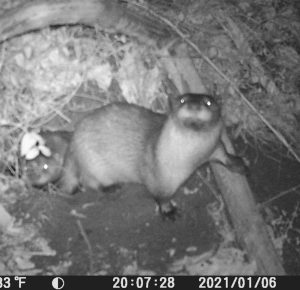
River otters at Oliver’s Woods
A surprising number of animals evidently share this burrow—rabbits, raccoons, opossum, the occasional deer mouse, and many creatures just as intriguing as Bigfoot’s lesser cousin.
What’s better than Bigfoot’s cousin? A river otter. What’s even better than a river otter? Four river otters, a lengthy confab between three raccoons, a curious fox enjoying the trails—and the ability to share our observations with others.
Look for trail cam highlights on social media every Wildlife Wednesday!
As our White River steward, Grace tends to our riverine properties. She writes, “Maybe I have a weak spot for lethargic opossums and thick raccoons, but there is something truly humbling about being the first to review a fresh set of trail cam footage.” Grace’s position is funded by the Nina Mason Pulliam Charitable Trust.

Ben Valentine
Guest Blogger
Ben Valentine is a founding member of the Friends of Marott Woods Nature Preserve and is active in several other conservation organizations. He leads a series of NUVO interviews with Indiana's environmental leaders, and he cherishes showing his son all the wonders of nature he grew up loving.

DJ Connors
Guest Blogger
DJ Connors, a Central Indiana native and late-to-life hunter, combines a lifelong appreciation for wildlife and the outdoors with a deep passion for exploring the natural beauty of the area he has called home for most of his life. As a husband and father of three, he is committed to ensuring his children have the same opportunities to connect with nature and appreciate the outdoors in their community. DJ’s unique journey into hunting emphasizes sustainability, responsible stewardship, and the importance of preserving these experiences for future generations.

Bridget Walls
Guest Blogger
Bridget is our first ever Communications and Outreach Intern. She is a graduate of Marian University, where she combined English, studio art, and environmental sciences in her degree studies. As treasurer for Just Earth, the university's environmental club, she helped plan events encouraging a responsible relationship between people, nature, and animals.

Jordan England
Guest Blogger
Jordan England is a lifelong Shelby County resident who graduated from Waldron Jr. Sr. High School (just a few miles from Meltzer Woods!). After earning her B.S. degree in Retail Management from Purdue University, she returned to Waldron to start a family with her husband, Brian. Together they have 3 young children and enjoy sharing with them their love of the community. Jordan is the Grants and Nonprofit Relations Director at Blue River Community Foundation, managing BRCF’s grant program, providing support to local nonprofits, and promoting catalytic philanthropy in Shelby County.

Cliff Chapman
President and CEO
As CILTI’s President and CEO, Cliff keeps CILTI’s focus on good science and stewardship. He’s mindful that the natural places you love took thousands of years to evolve and could be destroyed in a single day, and that knowledge drives his dedication to their protection.
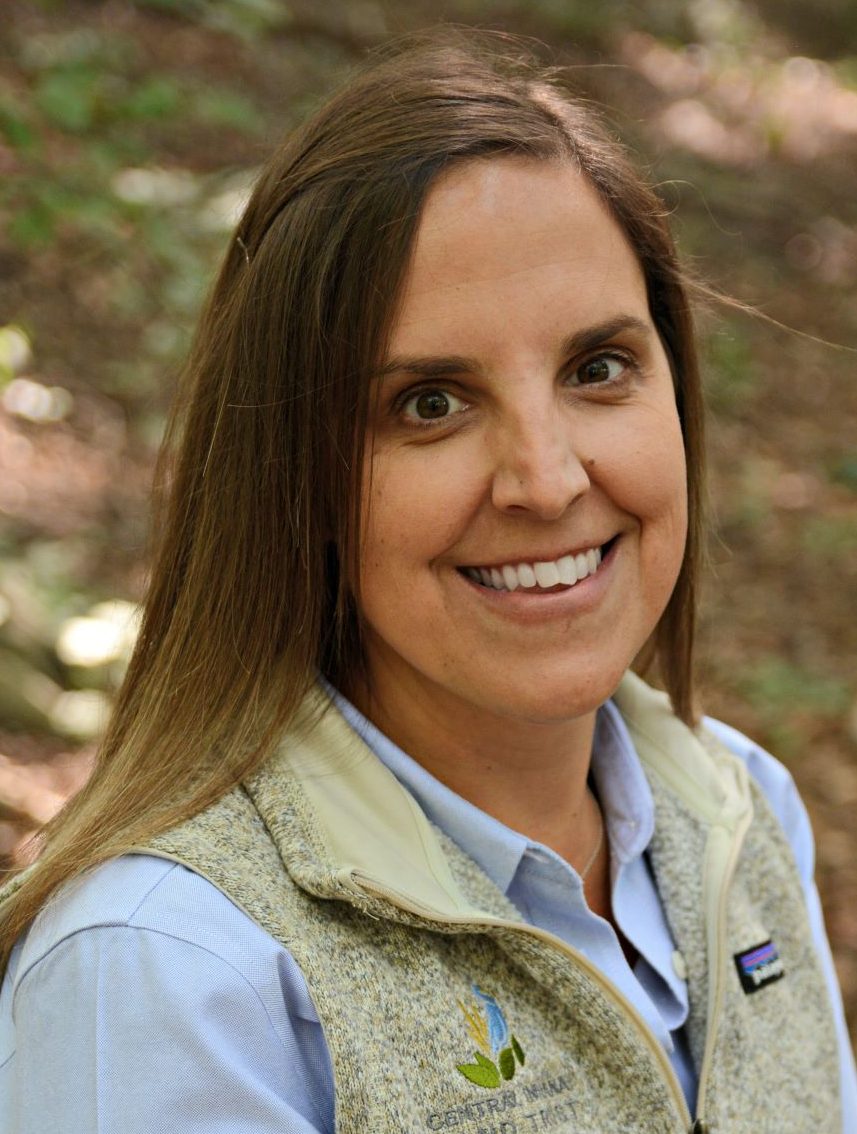
Stacy Cachules
Chief Operating Officer
Among her many key duties as Assistant Director, Stacy has the critical task of tracking our budget, making sure we channel donations for maximum efficiency. When her workday’s done, Stacy loves to spend time with her two young boys—and when not traveling, she’s likely planning the next travel adventure.

Ryan Fuhrmann
Vice Chair
Ryan C. Fuhrmann, CFA, is President and founder of Fuhrmann Capital LLC, an Indiana-based investment management firm focused on portfolio management. Ryan’s interest in land conservation centers around a desire to help preserve natural habitats for wildlife and the subsequent benefits it brings to people and the environment.

Joanna Nixon
Board Member
Joanna Nixon is the owner of Nixon Consulting, an Indianapolis-based strategy and project management firm focused on the nonprofit sector. She currently serves as the Philanthropic Advisor for the Efroymson Family Fund. Prior to opening her consulting practice in 2000, Joanna was vice-president for grantmaking at Central Indiana Community Foundation (CICF). Joanna has more than 25 years of experience in the nonprofit and arts and culture sector. She is passionate about the environment and loves bringing big ideas to life and creating high-quality arts and culture programs and experiences. Joanna enjoys outdoor adventures, including competing in fitness obstacle course races and hiking with her high energy Australian Cattle Dog, Jackson.

Karen Wade
Board Member
Before retiring, CILTI board member Karen Wade worked for Eli Lilly & Co. In retirement she volunteers for a number of organizations, including the Indiana Master Naturalist program, Johnson County Native Plant Partnership CISMA, Meadowstone Therapeutic Riding Center, and Leadership Johnson County.

David Barickman
Development Systems Manager
Born and raised in Central Illinois, David spent many days as a child wandering around the river, forest and lakes there. He works behind the scenes as a key member of our fundraising team. When not working, David loves to be outdoors hiking, fly fishing, kayaking or woodworking.

Jamison Hutchins
Stewardship Director
Jamison leads our stewardship team in caring for the land that is so important to you. He comes to our team after eight years as Bicycle and Pedestrian Coordinator for the city of Indianapolis, where his work had a positive impact from both health and environmental perspectives.

Jen Schmits Thomas
Media Relations
An award-winning communicator and recognized leader in Central Indiana’s public relations community, Jen helps us tell our story in the media. She is the founder of JTPR, which she and her husband John Thomas own together. She is accredited in public relations (APR) from the Public Relations Society of America, and loves to camp and hike in perfect weather conditions.

Shawndra Miller
Communications Director
Shawndra’s earliest writing projects centered around the natural world, starting when a bird inspired her to write her first “book” in elementary school. Now she is in charge of sharing our story and connecting you to our work. Through our print and online materials, she hopes to inspire your participation in protecting special places for future generations.

Phillip Weldy
Stewardship Specialist
Phillip enjoys nature’s wonders from an up-close-and-personal perspective as he works to restore the natural places you love. As an AmeriCorps member in Asheville, NC, he had his first full immersion in relatively undisturbed land while reconstructing wilderness trails in National Parks and National Forests.


December 2, 2025
Our board member, John Bacone, reflects on conserving key natural areas. He led the Department of Natural Resources Division of Nature Preserves for over four decades. Years ago, when I was working in the Indiana DNR Division of Nature Preserves (DNP), I asked Bob Waltz, the State Entomologist, how [...]
Betley Woods,Blossom Hollow,Homepage,Meltzer Woods,Newsroom,Properties,Stewardship


September 26, 2025
Want to see more nature protected in 2025 and beyond? Now is your chance to make twice the difference for Indiana’s lands, waters, and wildlife.
Fred & Dorothy Meyer Nature Preserve,Newsroom,Properties,Stewardship


June 26, 2025
FOR IMMEDIATE RELEASE Acquisition adds to property set aside for wildlife habitat and shielded from development The Central Indiana Land Trust, Inc. (CILTI) has closed on the purchase of an 80-acre forested parcel in Brown County, adding to a cluster of protected properties and ensuring habitats endure for several [...]
Newsroom,Press Releases,Properties
























